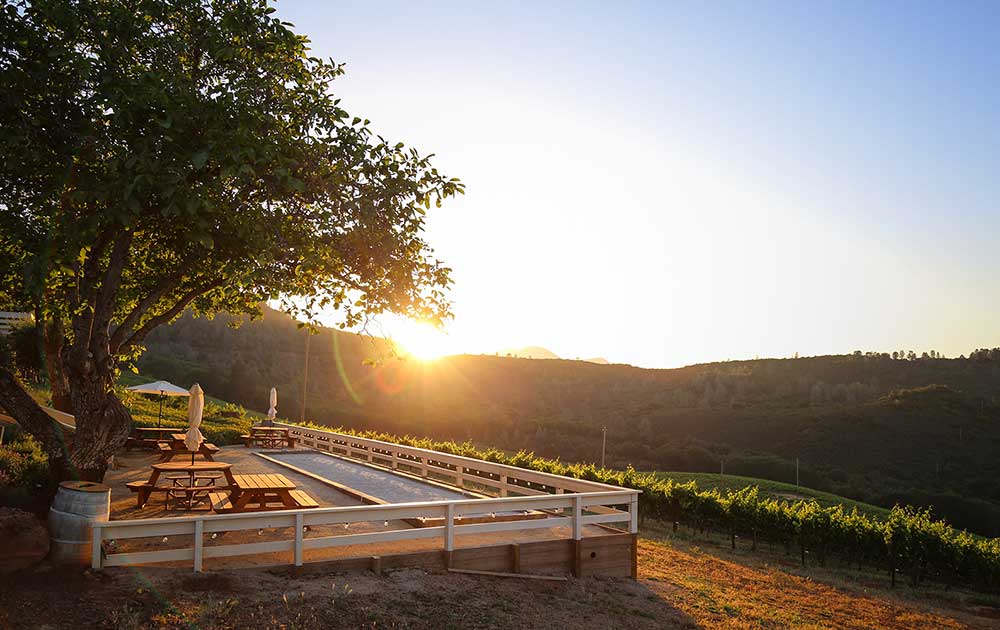
Pomo Baskets Weave Timeless Native American Art Into Historic Lake County
July 7, 2015

A fascinating tradition of true Native American art originates 100 miles north of San Francisco, on the shores of the oldest lake in North America, Clear Lake. Here in Lake County, California, we find the birthplace of the celebrated Pomo baskets, whose technical artistry is unique, unsurpassed and recognized worldwide as one of the most enduring examples of Native American culture.
An individual basket takes months or even years to weave, and today they remain highly sought after as collectible artifacts. But to the Pomo people, whose archaeological record at Clear Lake dates back more than 10,000 years, the baskets were not intended as artifacts or as gallery pieces. Up through the 19th and early 20th centuries, Pomo baskets had important practical everyday uses despite their precious artistry and detail.

“Anybody who’s studied Pomo baskets and has studied baskets throughout the country notices a number of qualities with the craftsmanship,” said Batsulwin Brown, a tribal historic preservation officer at the Big Valley Rancheria. “That’s what really separates Pomo baskets from other tribes and other cultures throughout the world. A lot of the baskets primarily were made by the female members of the community as a way of cultural and spiritual expression.”
Pomo baskets were linked to everyday life, Brown explained. They were used for wedding ceremonies as gifts as well as to gather and prepare foods. “They’re really important in terms of everyday life, cultural and traditional practices,” he said.
Pomo baskets are visually unique in that they incorporate items like bird feathers and seashells, but are also so meticulously crafted that many are fully watertight. Thus, this commitment to basket making would begin well before the baskets themselves were weaved.
“Pomo women were the main crafters of the baskets. Not only did they master the art of weaving, they also mastered the environment their materials came from,” said Brown. “They were not only basket-makers but they were caretakers, stewards of the land. They took care of gathering sites within ecosystems to maintain their supply of materials—different roots and willows that they needed to actually weave the baskets.”
Once the homesteaders settled California in the mid-19th century, the Pomo baskets became a cultural phenomenon.

“If you look at the 1850s, ’60s, ’70s, there was a big push all the way into the 1900s from a lot of people in anthropology and various universities,” Brown noted. “Anthropologists and a lot of the people who did studies on the tribal communities saw that a lot was going to be lost with the changes that were happening in the tribal communities—the loss of land and resources—so they went out and started to purchase a lot of these baskets.”
Many of the women in the community in the early 1900s didn’t have access to many jobs, so they would weave baskets and sell them to local ranchers, homesteaders and local stores in order to obtain goods to survive on. “That’s how a majority of basket collections have gotten into non-tribal hands,” Brown said.
Indeed, Pomo baskets in non-tribal hands are still being sold today at prices of $10,000 or more. But there are many places in Lake County and beyond where these baskets can still be appreciated by the general public.
The primary place would be the Lake County Courthouse Museum, which has a space dedicated to local artifacts collected here in Lake County. The Grace Hudson Museum in Mendocino County is another nearby museum that also showcases Pomo baskets. But the majority of basket collections are hosted at universities, like UC Berkeley. “Berkeley is one of the bigger ones that has a big collection; they have quite an extensive collection of baskets,” Brown added.
Pomo baskets are not only beautiful cultural artifacts, they also tell stories that deserve to be passed on for generations. Take in these rich stories and traditions by visiting Lake County, the home of the Pomo people and their magnificent baskets. These unforgettable artifacts serve as timeless examples of true Native American art and culture, and carry great significance.
